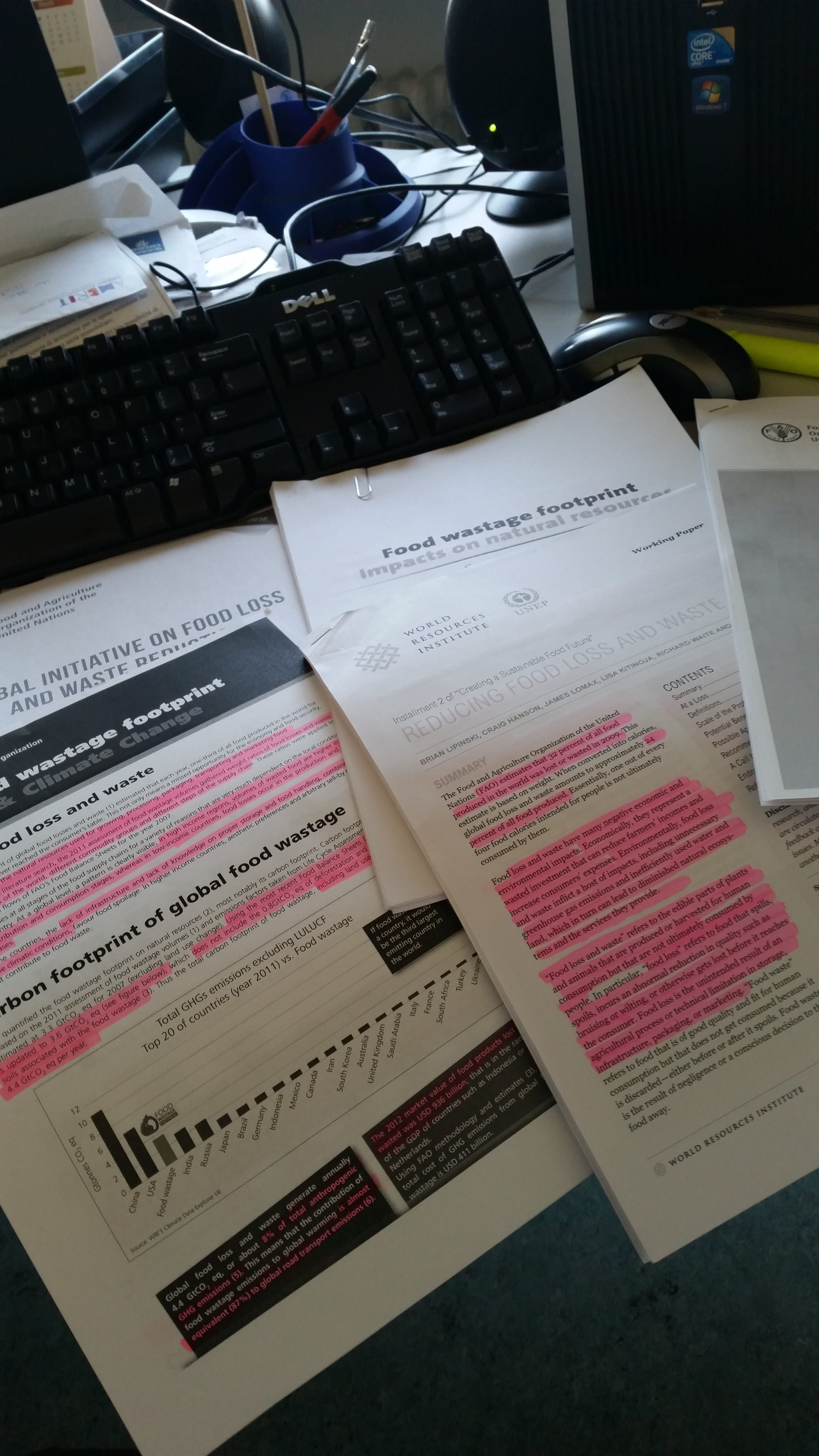-

Some of the papers that I analysed as part of the literature review!
Food Loss is an ambiguous term. I never appreciated how many different definitions existed until I started to conduct my literature review. The definition really depends on the study and the researcher that wrote the paper. Many papers use the same definition but different terminology and vice versa! In the end, I decided to use the definition outlined by Parfitt et al. (2010)-“food losses refer to the decrease in edible food mass throughout the part of the supply chain that specifically leads to edible food for human consumption, i.e. losses take place at the production, post-harvest and processing stages in the supply chain.“
- Quantifying loss is much more difficult than I imagined. It became apparent after reading a few papers that quantifying food losses is an incredibly complex task for a variety of reasons. The literature is full of estimates and “guesstimates”, however many of these have been rebutted. Consequently, the best statistics (from the FAO and Gustavsson et al., 2011) are widely quoted. In fact their statistics form the basis of a number of studies on the topic.
- A significant contrast exists between low and high income countries. An agreement that people in high income countries are much more wasteful than those in developing countries exists in the literature.
- Yet loss still occurs in developing regions. The literature is pretty clear on this-post-harvest systems and infrastructure are under-developed in many cases, leading to high levels of loss.
- The cause of these losses are extensive. The causes can be divided into primary and secondary causes. Primary causes denote factors that directly affect the produce while secondary causes generate conditions that subsequently lead to a primary cause of loss.
5 things I learned from doing the lit review
Comments Off on 5 things I learned from doing the lit review
